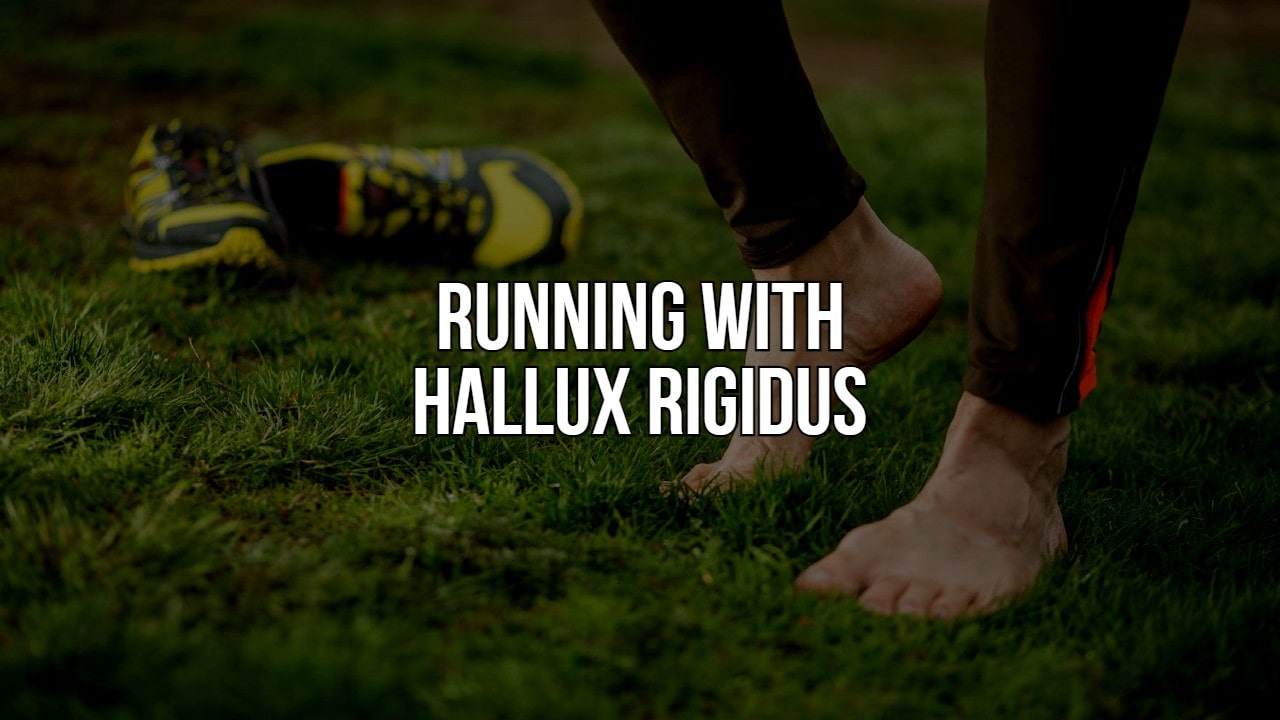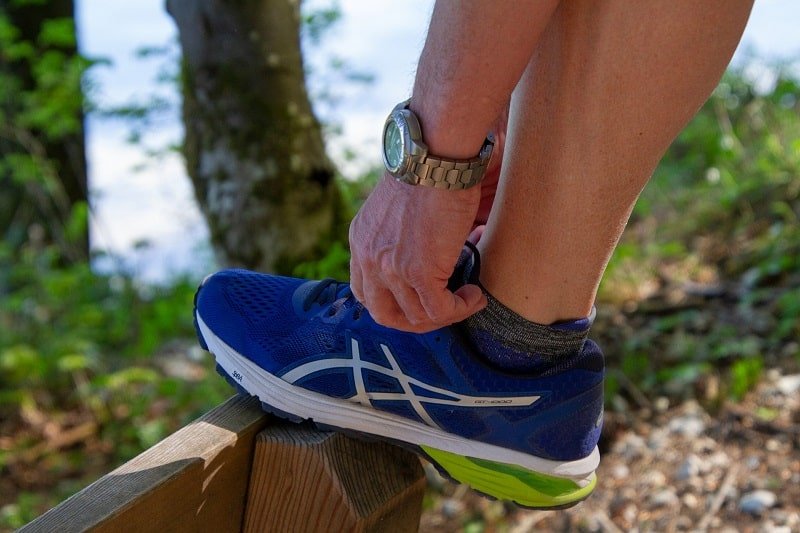Table of Contents
Among the types of rheumatoid diseases, arthritis takes the first place which causes immobility and difficulty in performing Activities of Daily Living‟ (ADL). Hallux rigidus is also one of them. Let’s combine Running With Hallux Rigidus and see every aspect of that.
Arthritis And Hallux Rigidus:
Arthritis is a common disorder which commonly affects the major joints of our body by creating pain and inflammation. This makes you unable to move which increases the inactivity. The most common site of arthritis in the foot is at the base of the big toe.
Hallux rigidus which is also known as “Big Toe Arthritis”, is one of the types of degenerative arthritis. It causes stiffness in the movement of big toe and limits its range of motion. That is why it is also known as “Stiff Big Toe”.
It often affects the performance of an athlete and causes irritation, not only in performing difficult tasks but also make walking and running impossible with the correct gait.
Symptoms
According to the (American Academy of Orthopeadic Surgeons, 2017), following are the most common symptoms found for this disease:
- Experiencing pain in the joint when you are active, especially while walking or running.
- Inability to bend the big toe up or down due to stiffness.
- The stiffness and pain at the base of the big toe can be worse in the cold weather.
- Swelling and inflammation around toe joint.
- Feels uncomfortable to wear shoes, sandals and high heels.
- There might be a bump like a bunions or callus develop on the top of the foot.
Diagnoses
When you experience pain in your toe or find that you are walking on the outside of your foot due to pain, you should consult your doctor right away. It is easier to treat hallux rigidus when it is caught early.
But if you wait until you notice a bony bump on the top of your foot, you will already have the bone spurs developed and the condition will become more difficult to treat.
You can be diagnosed with hallux rigidus by your healthcare provider testing the range of motion of your toe joint. Your provider may take an X-ray to see if there are any abnormalities in the bone or if bone spurs have formed.
Causes Of Hallux Rigidus
Hallux rigidus commonly develops due to a lot of stress on the toe joints, especially because of running or excessive walk. Now this is the biggest reason for having this condition in runners. But still, there are many other genuine causes which can lead you towards this condition:
1. Genetics:
The risk of developing the condition increases if your family member has it. This may be due to inheriting a certain foot type or way of walking.
2. Injury:
Several types of injuries can cause hallux rigidus, including stubbed toes and sprained big toe joints.
3. Overuse:
Overuse of the joint is common among workers who stoop or squat, as well as athletes who are pretty vulnerable in stressing their joints during training.
4. Certain Medical Conditions:
Inflammatory diseases, such as rheumatoid arthritis or gout may also lead this foot condition.
Can You Run With Hallux Rigidus?
The joint space is often decreased in this condition which limits the joint motion and makes it harder to toe off in running, causing it to create friction between both metatarsal bones due to ruptured cartilage.
Even if you can bear the pain, this friction will speedily progress this condition to worst, resulting in stage 4 hallux rigidus which only requires surgery for the treatment.
You should know that it is a progressive degenerative condition. So it is better to take precautions and a complete checkup before you get into any sports activity including running.
Preventive Cautions for Hallux Rigidus Intense Pain
If you have pain intensity for less than VAS 6th scale (6/10), you can continue your routine with the following safety pain relieving measures:
1. Appropriate Running Shoes:
Make sure your shoes have room for your toes. You may find that stiff soles are more comfortable for you. Avoid wearing high heels.
2. Use of toe orthotics:
Make sure you limit the movement of your big toe in your shoes. Introduce pads to limit their movement and avoid activities that stress your toes, such as jogging.
3. Soaking of foot:
Place your foot into hot water for 30 seconds, and then immediately into cold water for 30 seconds. This switching between hot and cold water with certain time limit can relieve the inflammation.
Surgical Options for Hallux Rigidus
Conservative measures aren’t always enough. If you still experience pain and stiffness, surgery may be the best option.
There are 4 surgical procedures for treating hallux rigidus:
- Cheilectomy: removal of bony spur
- Osteotomy: cutting of bone.
- Arthroplasty: replacement of damaged joint with the artificial one.
- Arthrodesis: fusion of both bones on the joint.
Which Is The Best Surgery Procedure For Runners?
Cheilectomy is the best surgical option for runners. Dr. Howard Kashefsky, the podiatric surgeon at American College of Foot and Ankle Surgeons (ACFAS) writes in a Lower Extremity Review magazine that Joint-preserving procedures are typically used in the management of hallux rigidus in athletes rather than joint fusions.
Athletes in high-level sports such as track & field, judo, soccer, and skating do well with the procedure and are able to return to activity after cheilectomy surgery procedure.
Does Running Shoe Matter?
Yes, the room area for your toes in your shoes matters a lot. Make sure your shoes have room for your toes. You may find that stiff soles are more comfortable for you. Avoid wearing high heels.
see best running shoes for hallux rigidus
Do You know That?
Hallux rigidus is more common in females. Of the 110 participants included in a 2009 cross-sectional study on the demographics of hallux rigidus, 66 percent were female.
References
(2017). Retrieved August 2022, from American Academy of Orthopeadic Surgeons:
Big Toe Arthritis (Hallux Rigidus). (n.d.). Retrieved from American Orthopaedic Foot & Ankle Society®:
Brian M. Weatherford, M. (2017, October). Diagnoses of Hallux Rigidus. Retrieved August 17, 2022, from OrthoInfo:
Hallux Rigidus. (n.d.). Retrieved August 2022, from Cleveland Clinic:
Liebscher-Bracht, R. (n.d.). HALLUX RIGIDUS EXERCISES. Retrieved 2022, from Liebscher & Bracht | The Pain Speicalists:

DPT, Jinnah Medical College.
Sports Injuries and Rehabilitation & Sports Nutrition
Martial Arts and Fitness Trainer
Senior Brown Belt – Kyokushinryu Karate, IKAK, Japan.



